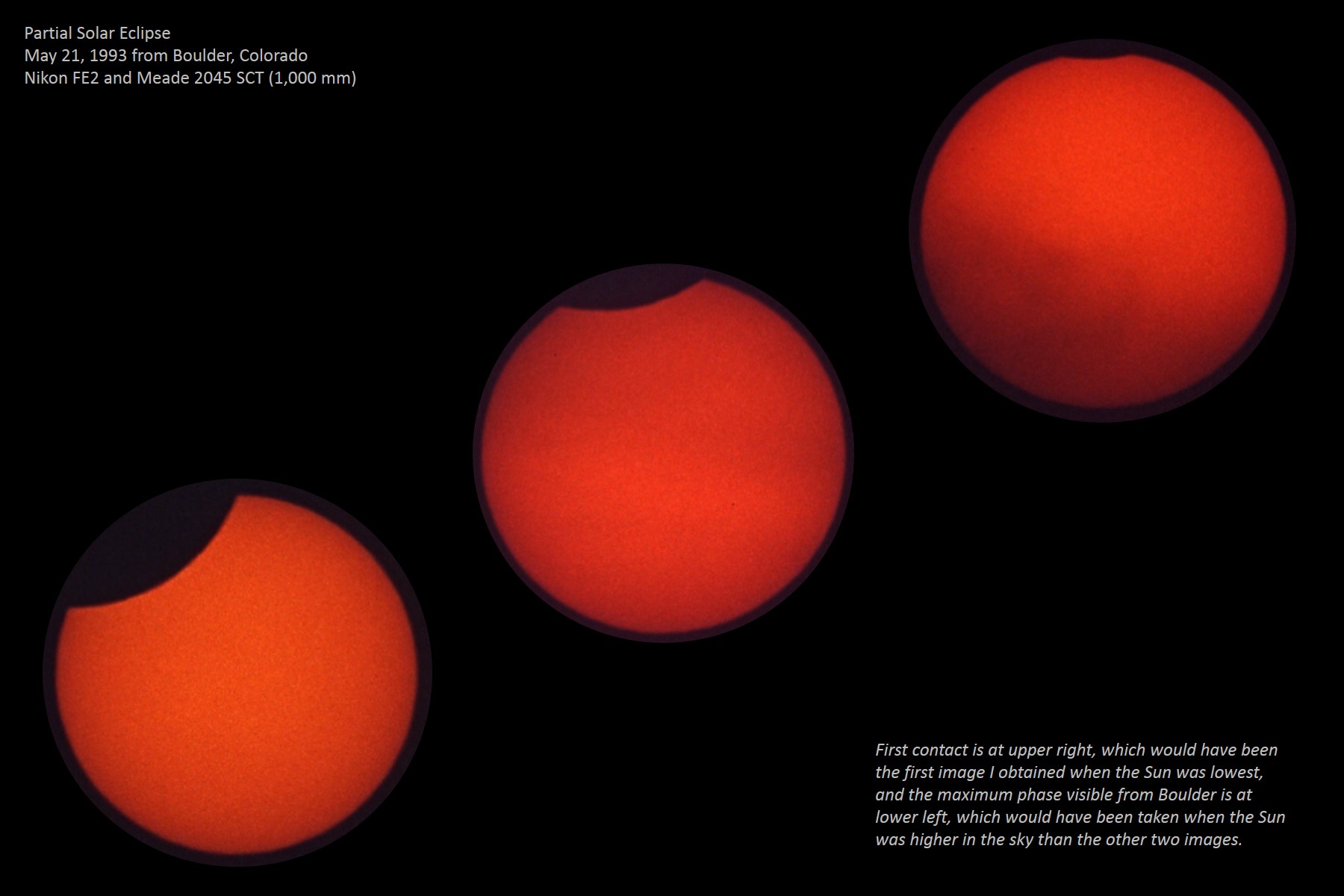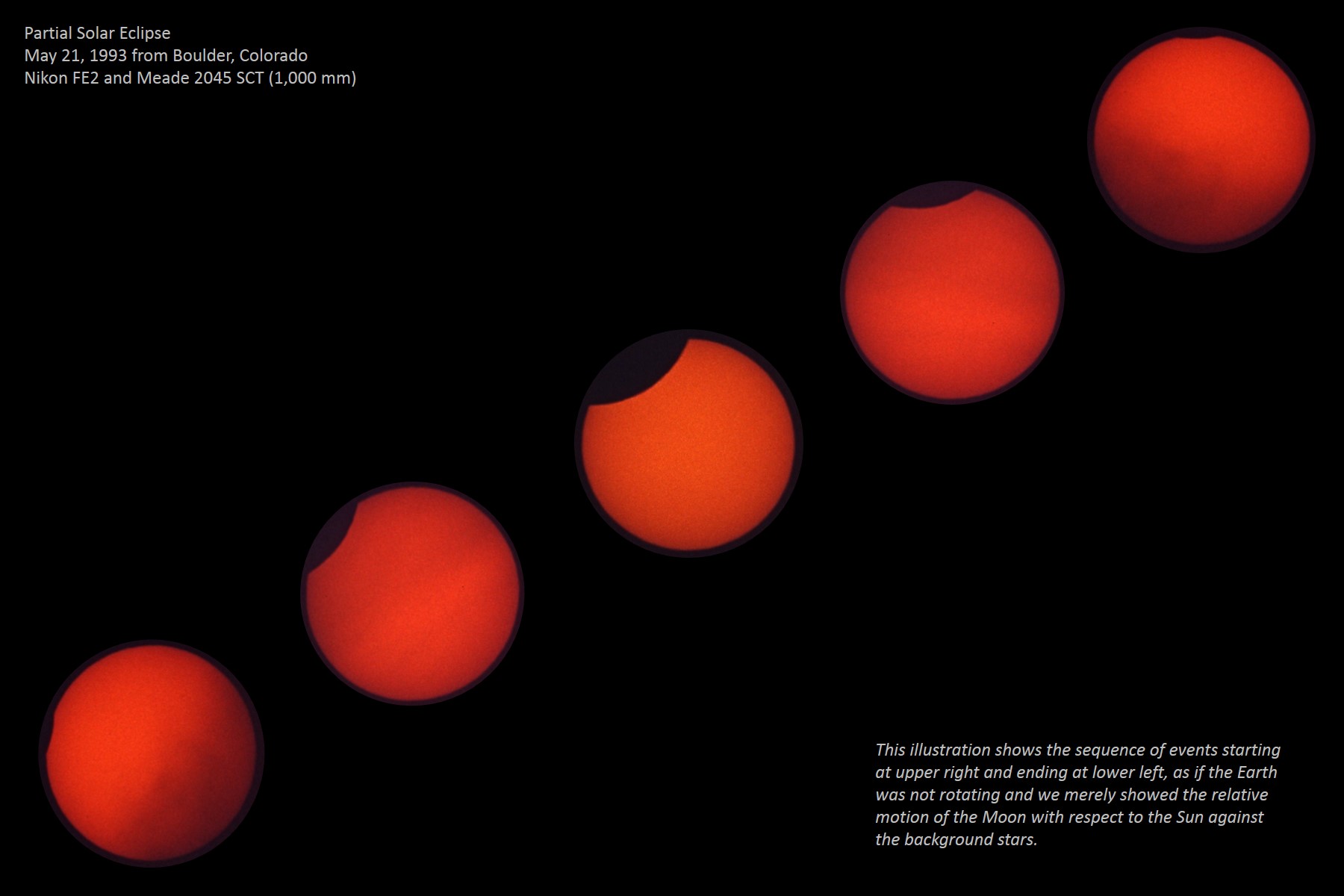The partial solar eclipse on May 21, 1993 was observed from Boulder, Colorado in the early morning. I drove to the National Center for Atmospheric Research (NCAR) because they have a site part way up the mountain west of the city with a large paved parking lot and an unobstructed view to the east.
The eclipse began shortly after sunrise, and although of course you can't see the starry background, the event occurs in close proximity to the Pleiades cluster. The Moon is to the upper right of the Sun, heading down towards descending node but intersecting the Sun before it reaches that point in its orbit. Therefore, the Moon skirts the northern hemisphere of the Sun, giving us the eclipse. The first bite out of the Sun's disk is at the very top, and as the eclipse progresses, the bite grows larger and migrates to the left side of the Sun, and then finally ending with the last indentation being at about the 9:30 position if the Sun was a clock face.
My recollection is that the day was very clear, although one of my images shows some obscuration by clouds, however even if there were some, it didn't interfere with the view through the telescope. My setup included a Meade 2045 4" Schmidt-Cassegrain telescope with a Thousand Oaks white light solar filter coupled to a Nikon FE2 camera most likely shooting 400 speed Ektachrome film. The 2045 model telescope had a focal length of 1,000 mm and operated at f/10.
The excellent website TimeandDate indicates that at Boulder, the eclipse magnitude was 0.1788 and the maximum obscuration was 8.76%. The magnitude is a measure of what percentage of the solar diameter was eclipsed by the Moon, while the obscuration is the amount of surface area of the Sun that is blocked.
Mouse over the thumbnails to see a full sequence of the eclipse using my images and then an illustration of the event as seen from Boulder, Colorado using Orion's TheSky® planetarium software.


